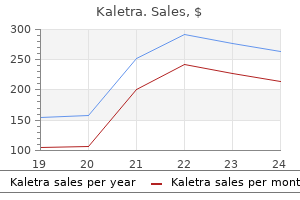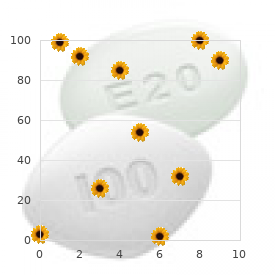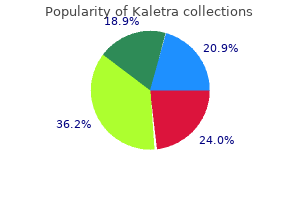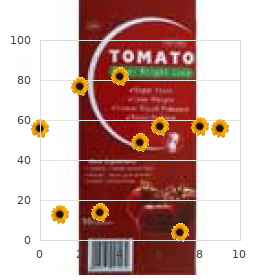Only $3.2 per item
Kaletra dosages: 250 mg
Kaletra packs: 60 pills, 120 pills, 180 pills, 240 pills, 300 pills, 360 pills
In stock: 709
10 of 10
Votes: 325 votes
Total customer reviews: 325
Description
If all 6 patients with IgM, IgA, or IgG monoclonal protein and chronic lymphocytic leukemia were included, the relative risk would be 1 medicine 1950 kaletra 250 mg purchase visa. Seventeen patients had an insufficient number of serum M-protein measurements to determine the pattern of increase. Patients with greater than 5% marrow plasmacytosis had a significantly higher risk of progression compared to those with 5% or fewer plasma cells, 1. However, there are several known prognostic factors that assist in estimation of the risk of progression for appropriate counseling and management. ChaPtEr 97 Monoclonal gammopathies of Undetermined significance and smoldering Multiple Myeloma All 3 factors abnormal Any 2 factors abnormal Any 1 factors abnormal Serum M-spike <1. A bone marrow aspiration and biopsy is also recommended for most patients, and cytogenetic studies should be done at baseline on the bone marrow sample. This recommendation is based on the fact that the progression risk is very low in these patients, and that there are no data that monitoring can prevent complications in a timely manner. No single factor can differentiate a patient with a benign monoclonal gammopathy from one in whom a malignant plasma cell disorder develops subsequently. The second curve is the risk of progression in patients with any two of these risk factors. The third curve illustrates the risk of progression with one of these risk factors. The bottom curve is the risk of progression for patients with none of the risk factors. Some exclude patients with bone lesions on skeletal survey but include patients who have lytic lesions on magnetic resonance imaging. Circulating Plasma Cells the ability of plasma cells to escape from the bone marrow microenvironment and circulate in the peripheral blood ("marrow emancipation") is a likely hallmark of aggressive disease as well as malignant transformation. Corresponding rates for progression within 3 years were 86 versus 35%, respectively, P < 0. The slide-based immunofluorescent method is not widely available, and these results can be more practically applied by detecting and quantifying circulating plasma cells using a six-color flow cytometric assay. Several Abnormalities on Magnetic Resonance Imaging Patients who undergo magnetic resonance imaging often have abnormalities detected even when the skeletal survey shows no ChaPtEr 97 Monoclonal gammopathies of Undetermined significance and smoldering Multiple Myeloma lytic lesions. Patients identified as high risk based on this assay had a 25% per year risk of progression in the first 2 years. A six-color flow cytometric assay, currently in clinical practice, offers greater sensitivity and reproducibility. Biclonal and triclonal Gammopathy Biclonal gammopathies are characterized by the presence of two different M proteins and occur in 3% to 6% of patients with monoclonal gammopathies. The two M proteins may be caused by the proliferation of two different clones of plasma cells, each producing an unrelated M protein, or by production of two M proteins by a single clone of plasma cells. In one study, biclonal gammopathy of undetermined significance was found in 37 of 57 patients with a biclonal gammopathy.

Menkoedoe (Morinda). Kaletra.
- Dosing considerations for Noni.
- Are there any interactions with medications?
- How does Noni work?
- Are there safety concerns?
- Colic, seizures, cough, diabetes, urinary problems, menstrual problems, fever, liver problems, constipation, vaginal discharge, nausea, smallpox, enlarged spleen, kidney disorders, swelling, asthma, bone and joint problems, cancer, eye cataracts, colds, depression, digestion problems, stomach ulcers, heart trouble, high blood pressure, infections, migraine, stroke, pain, reducing signs of aging, and other conditions.
- What is Noni?
Source: http://www.rxlist.com/script/main/art.asp?articlekey=96740
As water is reabsorbed in the proximal tubule, the concentration of any unusual unreabsorbed solute rises, and its osmotic presence retards the further reabsorption of water (here and downstream as well) medicinenetcom symptoms 250 mg kaletra buy mastercard. The failure of water to follow the sodium being removed from the lumen means that the sodium concentration in the proximal tubular lumen decreases slightly below that in the interstitial fluid. This concentration difference, even though small, drives a passive diffusion of sodium across the epithelium (mostly the tight junctions) back into the lumen, that is, sodium transport reaches the gradient limit we described in Chapter 42. Creates transtubular osmolality difference, which favors reabsorption of water by osmosis; in turn, water reabsorption concentrates many luminal solutes. Achieves reabsorption of many organic nutrients, phosphate, and sulfate by cotransport across the luminal membrane 3. Achieves secretion of hydrogen ion by countertransport across the luminal membrane; these hydrogen ions are required for reabsorption of bicarbonate (as described in Chapter 47) 4. Besides transcellular routes, some sodium also moves paracellularly in response to the lumen positive potential. The apical membranes and tight junctions have a very low water permeability, and water is not reabsorbed in this segment. Because the cells reabsorb salt, but not water, the thick ascending limb is the point in the nephron at which salt is separated from water. This ultimately allows water excretion and salt excretion to be controlled independently. Thus, osmotic diuretics inhibit the reabsorption of both water and sodium (as well as other ions). Osmotic diuresis can occur in persons with uncontrolled diabetes mellitus; the filtered load of glucose exceeds the tubular maximum (Tm) for this substance, and the unreabsorbed glucose then acts as an osmotic diuretic. This is a key difference from the proximal tubule, which reabsorbs water and sodium in essentially equal proportions. Also as shown in Table 442, the reabsorption of salt and reabsorption of water occur in different parts of the loop. In contrast, the ascending limbs (both thin and thick) reabsorb sodium and chloride but little water. As a whole, the loop reabsorbs some water and more salt, leaving a dilute fluid in the lumen. The differences between the two limbs reveal that the cells lining the descending and ascending regions have different permeability properties. The basolateral membranes of all renal cells are quite permeable to water due to the presence of aquaporins. As a result, the cytosolic osmolality is always close to that of the surrounding interstitium. The descending limbs contain aquaporins, so water is reabsorbed there, driven by the increasing osmolality of the medullary interstitium.

Specifications/Details
This latter approach might ultimately prove useful in exploiting the oral route to vaccinate people against disease-related antigens medications hyponatremia purchase 250 mg kaletra mastercard. Generalized immune responses can also be deleterious to the host under specific circumstances. For example, if the barrier function of the epithelium is compromised, it is possible to generate both local and systemic immune responses to the normal commensal flora of the gut, which in turn can lead to tissue injury. Indigenous Populations the entire gastrointestinal tract can be shown to be colonized by bacteria, but the types of bacteria and their numbers vary along the gastrointestinal tract. The stomach and the majority of the small intestine contain relatively few bacteria, and lack anaerobes. On the other hand, beginning in the distal small intestine, the numbers of bacteria increase sharply, and anaerobes also appear. The largest numbers of bacteria, by far, occur in the colon, where anaerobes vastly outnumber aerobic bacteria (Table 531). The flora in the colon is complex, likely containing at least 400 different bacterial species. However, the precise proportions of each species tend to differ between individuals, while remaining relatively constant in a given individual over time in the absence of events that alter the flora (see later). This has led to the concept that the bacterial flora of a given subject is essentially equivalent to a "fingerprint," representing the interplay between host and bacterial factors. The major anaerobic species include Bacteroides, bifidobacteria, clostridia, Eubacteria, and anaerobic streptococci. However, even in healthy individuals, a few such lymphocytes are thought to remain in the mucosal immune system, and may be needed to respond to microbes that express antigens that resemble proteins of the host, in an attempt to evade immunity. Under normal circumstances, these autoreactive clones are likely held in check by active suppressive mechanisms, including those mediated by regulatory T cells and inhibitory cytokines. Likewise, self-antigens may be presented in the absence of appropriate costimulatory molecules, which results in anergy (the lack of an immune reaction) rather than an immune response. On the other hand, under pathologic conditions, this regulation may be lost with the resulting emergence of autoreactivity and tissue inflammation and injury. Factors Controlling Microbiota the bacterial colonization of the upper gastrointestinal tract is kept in check by a number of physical and humoral factors. Many gastrointestinal secretions contain substances that are toxic to bacteria, including gastric acid, bile acids, small antimicrobial peptides known as defensins, and lysozyme. In the colon, on the other hand, the relatively slow motility permits the growth of large numbers of bacteria. These are largely retained in the large intestine by the action of the ileocecal valve. Upwards of 1012 bacteria can be found per gram of colonic luminal contents, and the majority of the formed mass of the stool, after water, consists of dead bacteria. Indeed, the number of colonic bacteria in the average person is greater than the total number of cells in the human body.
Syndromes
- Irregular heartbeat
- A skin condition called seborrheic dermatitis or seborrhea, which often involves the scalp, eyebrows, eyelids, behind the ears, and creases of the nose
- Anti-inflammatory medications
- Lethargy, sleepiness, not smiling
- Want to have children later by storing their sperm or by reversing their vasectomy
- Coma
- Kidney failure

Behind the root of the lung it takes part in the formation of the pulmonary plexus and then passes on to the oesophagus to form, with its fellow, the oesophageal plexus symptoms enlarged spleen generic kaletra 250 mg online. The left vagus enters the thorax in close association with the great arteries, lying at first lateral to the common carotid and then crossing the arch of the aorta. The left recurrent laryngeal branch, which is given off as the vagus crosses the aortic arch, passes below the ligamentum arteriosum, behind the arch and then ascends in the groove between the trachea and the oesophagus. The vagus then passes behind the root of the lung, enters into the formation of the pulmonary plexus and passes on to the oesophagus to form a plexus from which emerge two trunks, named anterior and posterior vagal trunks, each comprising fibres from both the left and right vagus. The two vagi then enter the abdomen through the oesophageal opening in the diaphragm, the anterior vagus passing on to the anterior surface and the posterior passing to the posterior aspect of the stomach. Beyond this it is difficult to trace the course of the nerves, but branches are given to the coeliac, hepatic and renal plexuses and, by way of these plexuses, are distributed to the fore- and midgut and to the kidneys. According to standard descriptions, the cranial root is formed by a series of rootlets that emerge from the medulla between the olive and the inferior cerebellar peduncle. These rootlets are considered to join the spinal root, travel with it briefly, then separate within the jugular foramen and are distributed with the vagus nerve to supply the musculature of the palate, pharynx and larynx. All the rootlets that form the accessory nerve arise caudal to the olive and no connections can be demonstrated between the accessory nerve and the vagus in the jugular foramen. Thus, according to this study the accessory nerve has no cranial component and consists only of the structure hitherto referred to as the spinal root of the accessory nerve. This spinal root is formed by the union of fibres from an elongated nucleus in the anterior horn of the upper five cervical segments, which leave the cord midway between the anterior and posterior roots, join, then pass upwards through the foramen magnum. The accessory nerve and the converging rootlets of the vagus nerve then enter the jugular foramen in a shared sheath of dura. The glossopharyngeal nerve enters the jugular foramen anterior to the vagus through a separate dural sheath. The accessory nerve passes backwards over the internal jugular vein to the sternocleidomastoid muscle, which it pierces (and supplies), and then crosses the posterior triangle of the neck to enter and supply the deep surface of the trapezius. Surface marking of the spinal accessory nerve the extracranial course of the spinal accessory nerve can be marked out by a line which runs from the tragus of the ear to a point at the junction of the middle and lower thirds of the anterior border of the trapezius. This line will be seen to cross the palpable transverse process of the atlas (which 416 the nervous system lies immediately inferior to the mastoid process) and also the junction of the upper and middle thirds of the posterior border of the sternocleidomastoid muscle. There is, however, a good deal of variation in the precise position of the nerve as it crosses the posterior triangle of the neck. This follows, for example, most block dissections of the lymph nodes of the neck, the nerve being sacrificed in clearing the posterior triangle. The accessory nerve may also be damaged inadvertently during a supraclavicular lymph node biopsy.
Related Products
Additional information:
Usage: p.c.

Tags: generic 250 mg kaletra free shipping, kaletra 250 mg order, cheap kaletra 250 mg mastercard, discount kaletra 250 mg free shipping
Customer Reviews
Real Experiences: Customer Reviews on Kaletra
Ortega, 21 years: The sphincter urethrae in the female is a tenuous structure and vesical control appears to depend mainly on the intrinsic sphincter of condensed circular muscle fibres of the bladder. This fatigue is dependent on the time between stimuli, with full recovery taking longer than 10 minutes. However, we emphasize that specific chloride depletion, in a manner independent of and in addition to extracellular volume contraction, helps maintain metabolic alkalosis by stimulating hydrogen ion secretion. The testis slides into the scrotum posterior to this, projects into it and is therefore clothed front and sides with peritoneum.
Pyran, 41 years: Additional evidence for a contribution of non-axotomized nociceptors comes from clinical studies demonstrating that distal therapies are effective in neuropathic pain states. This results in an ostium secundum defect, which allows shunting of blood from the left to the right atrium. Screwdrivers and cork screws are made for right-handed people to screw in using this supination action. There are also non-myelinating Schwann cells, which in nerve fibers ensheathe small-diameter unmyelinated axons, usually in groups called Remak bundles (Griffin and Thompson 2008).
Finley, 39 years: The caecum may or may not be completely peritonealized, and the appendix, although usually free within its own mesentery, occasionally lies extraperitoneally behind the caecum and ascending colon or adheres to the posterior wall of these structures. Gerevich Z, Muller C, Illes P: Metabotropic P2Y1 receptors inhibit P2X3 receptor-channels in rat dorsal root ganglion neurons, European Journal of Pharmacology 521:3438, 2005. The small (short) saphenous vein commences at the ankle behind the lateral malleolus where it drains the lateral side of the dorsal venous plexus of the foot. Of course, there is also overlap between the gastric and intestinal phases of secretion since the meal moves only gradually into the duodenum.
Ugo, 52 years: The recurrent laryngeal nerve, lying in the tracheo-oesophageal groove, is usually behind the terminal branches of the inferior thyroid artery. Goedert M, Stoeckel K, Otten U: Biological importance of the retrograde axonal transport of nerve growth factor in sensory neurons, Proceedings of the National Academy of Sciences of the United States of America 78:58955898, 1981. There are no units on the ordinate because the scale is different for each of the three gases, depending on the alveolar partial pressure of each gas. In one series, 12 of 16 patients with nonmalignant disorders survived with donor engraftment after receiving this conditioning regimen.
Bufford, 42 years: Individual neurons can respond to different modalities of noxious stimuli, including mechanical, thermal, and chemical. Surfactant is also cleared from the alveoli by alveolar macrophages, absorption into the lymphatics, or migration up to the small airways and the mucociliary escalator (discussed in Chapter 31). As we will see in later chapters, a number of substances are reabsorbed in certain regions of the nephron and secreted in other regions. This reflex may be very important in maintaining the patency of the upper airway during strong inspiratory efforts and during sleep.
Goran, 35 years: The whole of the superficial surface of the mandible is palpable apart from its coronoid process. The type of heavy or light chain and the organ distribution of amyloid deposits did not predict the development of a thromboembolic event. However, there is considerable variation among individuals, and the amount of gas also depends on the quantity of fermentable residues that depends, in turn, on the diet. Without hemoglobin, the cardiovascular system could not supply sufficient oxygen to meet tissue demands.
Zakosh, 25 years: Vertical sections reveal that epidermal axons emerge from the superficial dermal nerve plexuses running beneath the epidermis. First, umbilical cord blood represents a potentially nonlimiting donor source for transplantation. The superficial group of posterior compartment muscles comprises gastrocnemius, soleus and plantaris, whereas the deep group is 282 the lower limb made up of flexor digitorum longus, flexor hallucis longus, tibialis posterior and popliteus. Fitzgerald M, Lynn B: the sensitization of high threshold mechanoreceptors with myelinated axons by repeated heating, Journal of Physiology 265:549563, 1977.



